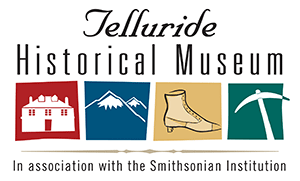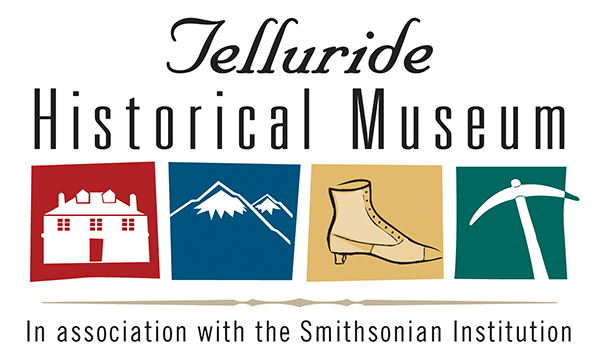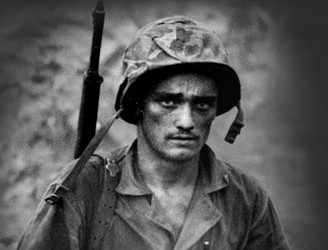For Immediate Release
TELLURIDE HISTORICAL MUSEUM HOSTS
“AN EVENING WITH KEN BURNS: A FILM SCREENING AND AUDIENCE Q&A”
Telluride, Colorado (August 6, 2014) Days before the 41st Telluride Film Festival officially begins, Telluride residents and visitors will have a special opportunity to meet Ken Burns, the award-winning, documentary film producer and director. On Sunday, August 24, at 6:00 p.m. at The Palm Theater, the Telluride Historical Museum will host, “An Evening with Ken Burns: A Film Screening and Audience Q&A.”
Celebrating the 70th anniversary of D-Day in June of this year, Ken Burns will host an encore screening of his documentary, “The War,” Episode Four: Pride of Our Nation. “The War,” directed by Ken Burns and Lynn Novick, was originally released in 2007 to great public and critical acclaim. Episode Four: Pride of Our Nation chronicles the pivotal phase in the war between June and August 1944 – in both the European and Pacific Theaters.
After the screening, the Museum will host an audience Q&A with Ken Burns as well as a book and DVD signing courtesy of Between the Covers Bookstore. All students, as well as active and retired military personnel and their families receive free admission. Tickets are available online at www.telluridemuseum.org.
“We are thrilled to welcome Ken Burns to Telluride for this special screening and audience Q&A,” commented Erica Kinias, Executive Director at the Telluride Historical Museum. “Ken Burns is a long-time friend of Telluride and we are excited about this opportunity to offer a public screening of this powerful documentary.” The program also coincides with the Museum’s annual exhibit, Voices of War: Telluride During World War II, which will be on display at the Telluride Historical Museum through March 2015.
If you attend:
When: Sunday, August 24, 2014, 6:00 – 9:00 p.m.
Where: The Palm Theater, 721 W. Colorado Ave., Telluride
Tickets: Free admission for students and all active and retired military personnel. $20/adults, $15/Museum and Palm Theater members
Purchase tickets: www.telluridemuseum.org
Questions: Erica Kinias, (970) 728-3344 x1, erica@telluridemuseum.org
More about Ken Burns
Ken Burns has been making documentary films for more than thirty years. Since the Academy Award-nominated Brooklyn Bridge in 1981, he has gone on to direct and produce some of the most acclaimed historical documentaries ever made.
Burns was the director, producer, co-writer, chief cinematographer, musical director and executive producer of the landmark television series The Civil War. The film was the highest-rated series in the history of American public television – prior to Baseball — and attracted an audience of 40 million during its premiere in September 1990. The New York Times called it a “masterpiece,” and that Burns takes his place as the most accomplished documentary filmmaker of his generation.”
Some of Burns’ other films include, The Address (2014), The Central Park Five (2013), The Dust Bowl (2012), Prohibition, (2011), The National Parks: America’s Best Idea (2009), and The War (2007), which was co-directed with Lynn Novick.
More about “The War:” Episode Four: Pride of Our Nation
June 1944-August 1944
By June 1944, there are signs on both sides of the world that the tide of the war is turning. On June 6, 1944 — D-Day — in the European Theater, a million and a half Allied troops embark on one of the greatest invasions in history: the invasion of France. Among them are Dwain
Luce of Mobile, Alabama who drops behind enemy lines in a glider; Quentin Aanenson of Luverne, Minnesota, who flies his first combat mission over the Normandy coast; and Joseph Vaghi of Waterbury, Connecticut, who manages to survive the disastrous landing on Omaha Beach where German resistance nearly decimates the American forces. It is the bloodiest day in American history since the Civil War, with nearly 2,500 Americans losing their lives. But the Allies succeed in tearing a 45-mile gap in Hitler’s vaunted Atlantic Wall, and by day’s end more than 150,000 men landed on French soil. They quickly found themselves bogged down in the Norman hedgerows, facing German troops determined to make them pay for every inch of territory gained. For months, the Allies measure their progress in yards, and suffer far greater casualties than expected.
In the Pacific, the long climb from island to island toward Japan is well underway, but the enemy seems increasingly determined to defend their territory to the death. The Marines, including Ray Pittman of Mobile, fight the costliest Pacific battle to date — on the island of Saipan. There they first encounter Japanese civilians, who, like their soldiers, seem resolved to die for their emperor rather than surrender.
Back home, while anxiously listening to the radio, watching newsreels and scanning casualty lists in the newspapers. Americans do their best to go about their normal lives, but on doorsteps all across the country, dreaded telegrams from the War Department arrive at a rate inconceivable just one year earlier.
In late July, Allied forces break out of the hedgerows in Normandy, and by mid-August, the Germans are in full retreat out of France. On August 25, after four years of Nazi occupation, Paris is liberated — and the end of the war in Europe seems only a few weeks away.
####


